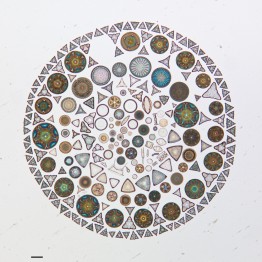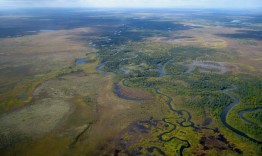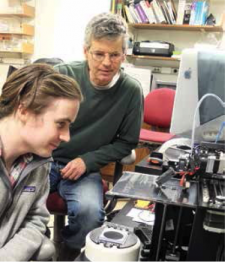The Ecosystem Studies of Sub-Arctic Seas Program (ESSAS) will hold its 10th Annual Science Meeting in Seattle over three days, beginning June 15. Cosponsored by the College of the Environment, and in coordination with the Future of Ice Initiative, the meeting will feature several speakers who will address topics associated with the ecosystem changes being documented or predicted in the Arctic and sub-Arctic, and the effects those are having on people and economies connected to the region.
Read more »UW oceanographers shed light on the hidden world of marine microbes
Tiny marine microbes produce half of Earth’s oxygen, absorb carbon dioxide from the air, and even regulate the productivity of fisheries. Scientists are only beginning to understand the ecology of these microscopic creatures, but discoveries made by researchers at the College of the Environment’s School of Oceanography are informing our understanding of their hidden world. Oceanographer Ginger Armbrust and her team, using genetic and molecular toolsets, recently found that single-celled algae called diatoms grow faster when a hormone released by bacteria is present.
Read more at UW Today »Friday Harbor Labs outreach excites budding scientists
It’s a picture-perfect day on the shores of San Juan Island’s Griffin Bay. The sun is blazing, the tide is out, and Debbie Taylor’s sixth grade class is on the prowl, keeping their eyes peeled for mud- and sand-loving ocean critters. Bedecked in rain boots and sneakers caked in wet sand, the students poke and prod in burrows and under seagrasses in search of marine invertebrates.
Read more »Chemical tags in ear bones track Alaska's Bristol Bay salmon
Scientists from Aquatic and Fishery Sciences and other institutions are learning a lot about where Chinook salmon swim in Alaska’s Bristol Bay region through chemical signatures recorded in their ear bones. Similar to a tree’s growth rings, this bone—called an otolith—accumulates layers as the fish grows. Acting as a little recorder, each layer of the otolith corresponds to the unique chemical signatures of the waters in which they swam.
Read more at UW Today »New knowledge and technology help scientists track harmful algae
Though the waters of Puget Sound are full of beneficial algae, which provide oxygen, food, and shelter for other creatures, it’s the nasty ones that usually make the news, when they "bloom" into toxic pools, harming fish and humans. Now, researchers working with Washington Sea Grant have started to narrow in on harmful algae’s behaviors, and are developing some slick techniques that they hope will lead to much more effective detection and monitoring.
Read more »





